Myosin VI and vinculin cooperate during the morphogenesis of cadherin cell cell contacts in mammalian epithelial cells
- PMID: 17664339
- PMCID: PMC2064848
- DOI: 10.1083/jcb.200612042
Myosin VI and vinculin cooperate during the morphogenesis of cadherin cell cell contacts in mammalian epithelial cells
Abstract
Cooperation between cadherins and the actin cytoskeleton controls many aspects of epithelial biogenesis. We report here that myosin VI critically regulates the morphogenesis of epithelial cell-cell contacts. As epithelial monolayers mature in culture, discontinuous cell-cell contacts are initially replaced by continuous (cohesive) contacts. Myosin VI is recruited to cell contacts as they become linear and cohesive, where it forms a biochemical complex with epithelial cadherin (E-cadherin). Myosin VI is necessary for strong cadherin adhesion, for cells to form cohesive linear contacts, and for the integrity of the apical junctional complex. We find that vinculin mediates this effect of myosin VI. Myosin VI is necessary for vinculin and E-cadherin to interact. A combination of gain and loss of function approaches identifies vinculin as a downstream effector of myosin VI that is necessary for the integrity of intercellular contacts. We propose that myosin VI and vinculin form a molecular apparatus that generates cohesive cell-cell contacts in cultured mammalian epithelia.
Figures

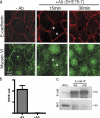
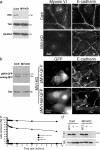
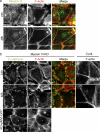

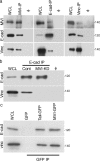


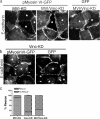
Similar articles
-
Motor Proteins: tightening your belt with myosin VI.Curr Biol. 2007 Nov 6;17(21):R915-7. doi: 10.1016/j.cub.2007.09.003. Curr Biol. 2007. PMID: 17983566
-
Dynamic microtubules regulate the local concentration of E-cadherin at cell-cell contacts.J Cell Sci. 2006 May 1;119(Pt 9):1801-11. doi: 10.1242/jcs.02903. Epub 2006 Apr 11. J Cell Sci. 2006. PMID: 16608875
-
Regulation of cell-cell junctions by the cytoskeleton.Curr Opin Cell Biol. 2006 Oct;18(5):541-8. doi: 10.1016/j.ceb.2006.08.004. Epub 2006 Aug 14. Curr Opin Cell Biol. 2006. PMID: 16905303 Review.
-
Myosin VI plays a role in cell-cell adhesion during epithelial morphogenesis.Mech Dev. 2004 Nov;121(11):1335-51. doi: 10.1016/j.mod.2004.06.007. Mech Dev. 2004. PMID: 15454264
-
Productive tension: force-sensing and homeostasis of cell-cell junctions.Trends Cell Biol. 2011 Sep;21(9):499-505. doi: 10.1016/j.tcb.2011.05.006. Epub 2011 Jul 15. Trends Cell Biol. 2011. PMID: 21763139 Review.
Cited by
-
Multicomponent analysis of junctional movements regulated by myosin II isoforms at the epithelial zonula adherens.PLoS One. 2011;6(7):e22458. doi: 10.1371/journal.pone.0022458. Epub 2011 Jul 22. PLoS One. 2011. PMID: 21799860 Free PMC article.
-
Diverse functions of myosin VI elucidated by an isoform-specific α-helix domain.Nat Struct Mol Biol. 2016 Apr;23(4):300-308. doi: 10.1038/nsmb.3187. Epub 2016 Mar 7. Nat Struct Mol Biol. 2016. PMID: 26950368 Free PMC article.
-
Vinculin regulates cell-surface E-cadherin expression by binding to beta-catenin.J Cell Sci. 2010 Feb 15;123(Pt 4):567-77. doi: 10.1242/jcs.056432. Epub 2010 Jan 19. J Cell Sci. 2010. PMID: 20086044 Free PMC article.
-
GPR120 prevents colorectal adenocarcinoma progression by sustaining the mucosal barrier integrity.Sci Rep. 2022 Jan 10;12(1):381. doi: 10.1038/s41598-021-03787-7. Sci Rep. 2022. PMID: 35013389 Free PMC article.
-
The Drosophila afadin homologue Canoe regulates linkage of the actin cytoskeleton to adherens junctions during apical constriction.J Cell Biol. 2009 Jul 13;186(1):57-73. doi: 10.1083/jcb.200904001. J Cell Biol. 2009. PMID: 19596848 Free PMC article.
References
Publication types
MeSH terms
Substances
LinkOut - more resources
Full Text Sources
Other Literature Sources
Molecular Biology Databases
Research Materials

